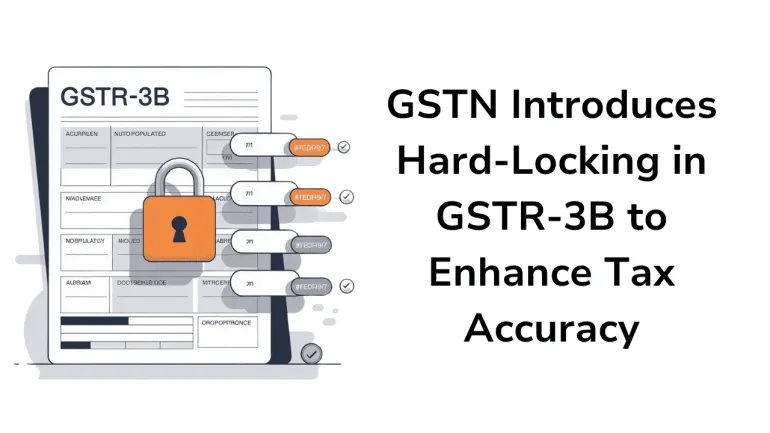Hard-Locking of Auto-Populated Liability in GSTR-3B: A Major Compliance Shift

The GSTN has introduced a significant compliance change by hard-locking the auto-populated liability in GSTR-3B. This move aims to improve tax accuracy, reduce discrepancies, and ensure seamless reconciliation between GSTR-1 and GSTR-3B.
What is Hard-Locking in GSTR-3B?
Hard-locking means that the system-generated liability in GSTR-3B, based on GSTR-1, cannot be reduced by the taxpayer. Earlier, businesses could manually adjust their tax liability, leading to mismatches and potential revenue leakages. Now, the tax liability in GSTR-3B will be auto-populated from GSTR-1 and will remain non-editable.
Why This Change?
The GST Council introduced this measure to:
1. Prevent tax evasion – Ensuring that taxpayers cannot underreport liabilities.
2. Enhance accuracy – Reducing mismatches between GSTR-1 (sales data) and GSTR-3B (tax payment).
3. Simplify compliance – Encouraging businesses to report correct details upfront in GSTR-1.
4. Improve tax collection – Ensuring that reported sales match with declared liabilities.
Impact on Businesses
This change requires businesses to report their outward supplies correctly in GSTR-1, as any errors cannot be rectified in GSTR-3B. Key impacts include:
- Higher accuracy needed in GSTR-1 filings – Since liability in GSTR-3B is now locked, errors in GSTR-1 could lead to incorrect tax payment.
- Reconciliation challenges – Businesses must ensure GSTR-1, e-invoices, and e-way bills are aligned.
- Increased compliance burden – Any corrections must be made in the next month's return, causing cash flow disruptions.
Link Between IMS Reconciliation, GSTR-2B Regeneration & GSTR-3B Locking
With hard-locking in place, businesses need to:
1. Perform IMS reconciliation – Ensuring ITC claimed aligns with supplier invoices and GSTR-2B.
2. Regenerate GSTR-2B when needed – Ensuring ITC eligibility before GSTR-3B filing.
3. Align purchases with GSTR-3B – Preventing mismatches and avoiding compliance issues.
Using automation tools like EaseMyGST can simplify IMS reconciliation and ensure GSTR-2B is regenerated correctly before locking GSTR-3B, reducing errors and ensuring smooth compliance.
How to Prepare for Hard-Locking?
To avoid issues due to hard-locking, businesses should:
1. Ensure accurate GSTR-1 filings – Validate invoice details before submission.
2. Use automation tools – GST software like EaseMyGST can help in reconciling GSTR-1 and GSTR-3B.
3. Regularly reconcile data – Match GSTR-1, e-invoices, and books of accounts.
4. Educate finance teams – Train teams to follow correct reporting practices.
Conclusion
The hard-locking of auto-populated liability in GSTR-3B is a major step towards strengthening GST compliance and reducing discrepancies. Businesses must adapt by ensuring accurate GSTR-1 filings and leveraging technology for seamless reconciliation. Tools like EaseMyGST can help businesses stay compliant and avoid last-minute surprises.
Stay compliant, stay ahead!
Attention: Hard-Locking of auto-populated liability in GSTR-3B
Jan 27th, 2025
1. Please refer to the advisory dated October 17, 2024 , regarding the restricting the editing of auto-populated liability in GSTR-3B from the January 2025 tax period.
2. However, various requests have been received from the trade seeking time for the same. Therefore, the decision of making non-editable of auto-populated liability in GSTR-3B is currently not being implemented from January tax period, on the GST Portal.
3. It may be noted that the above change will be introduced soon and trade will be informed accordingly. Taxpayers are encouraged to prepare for the said change.
